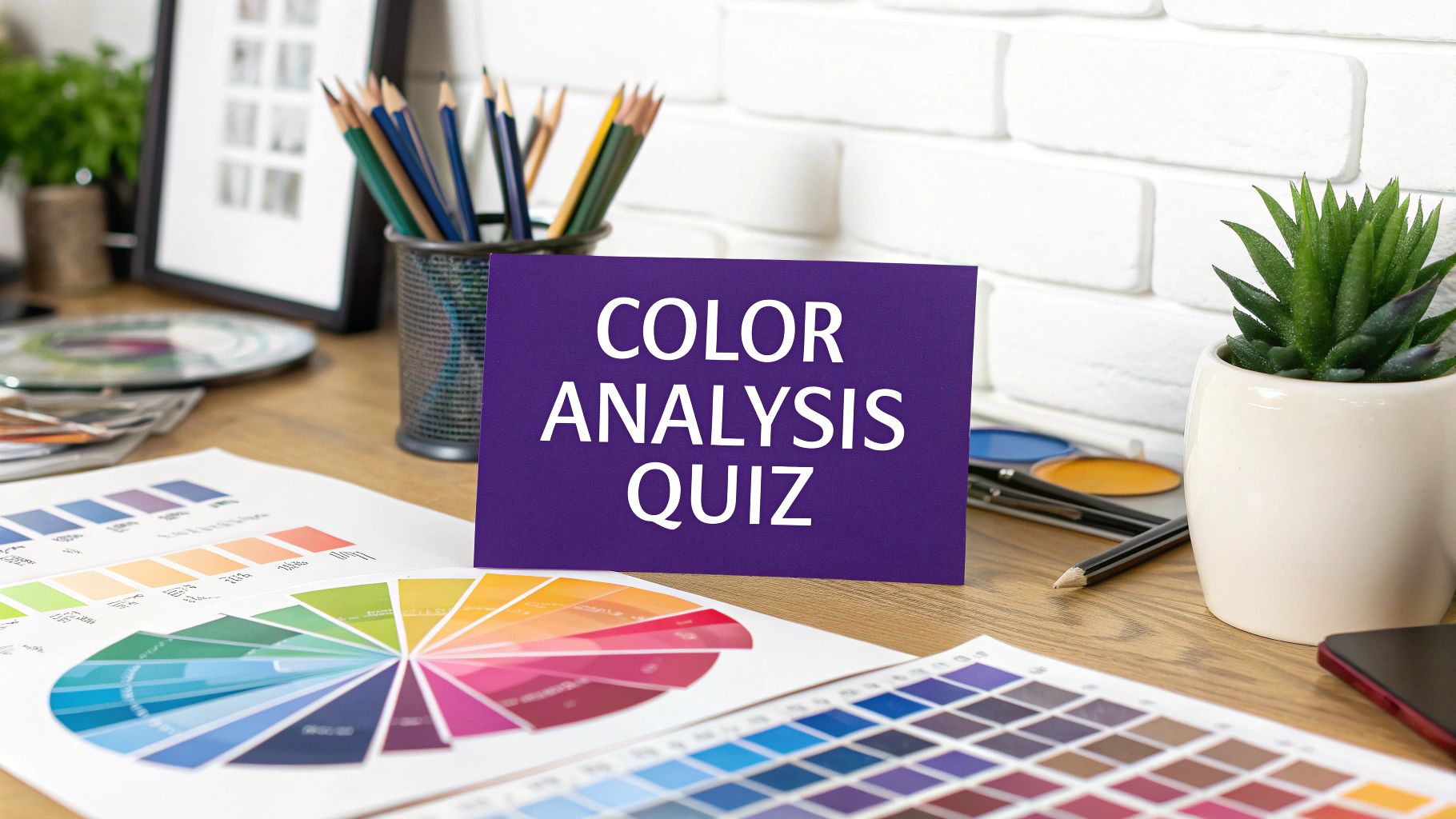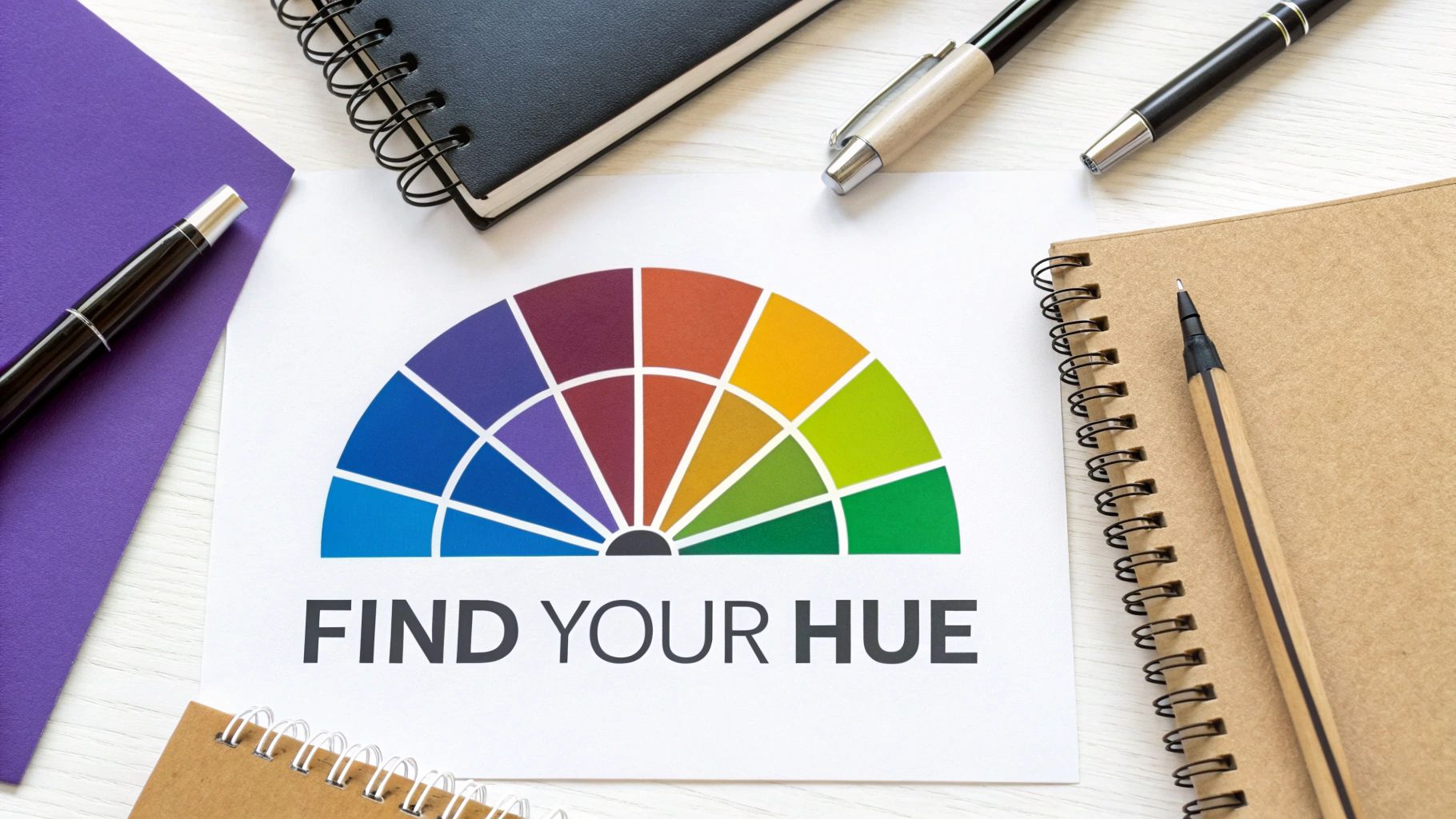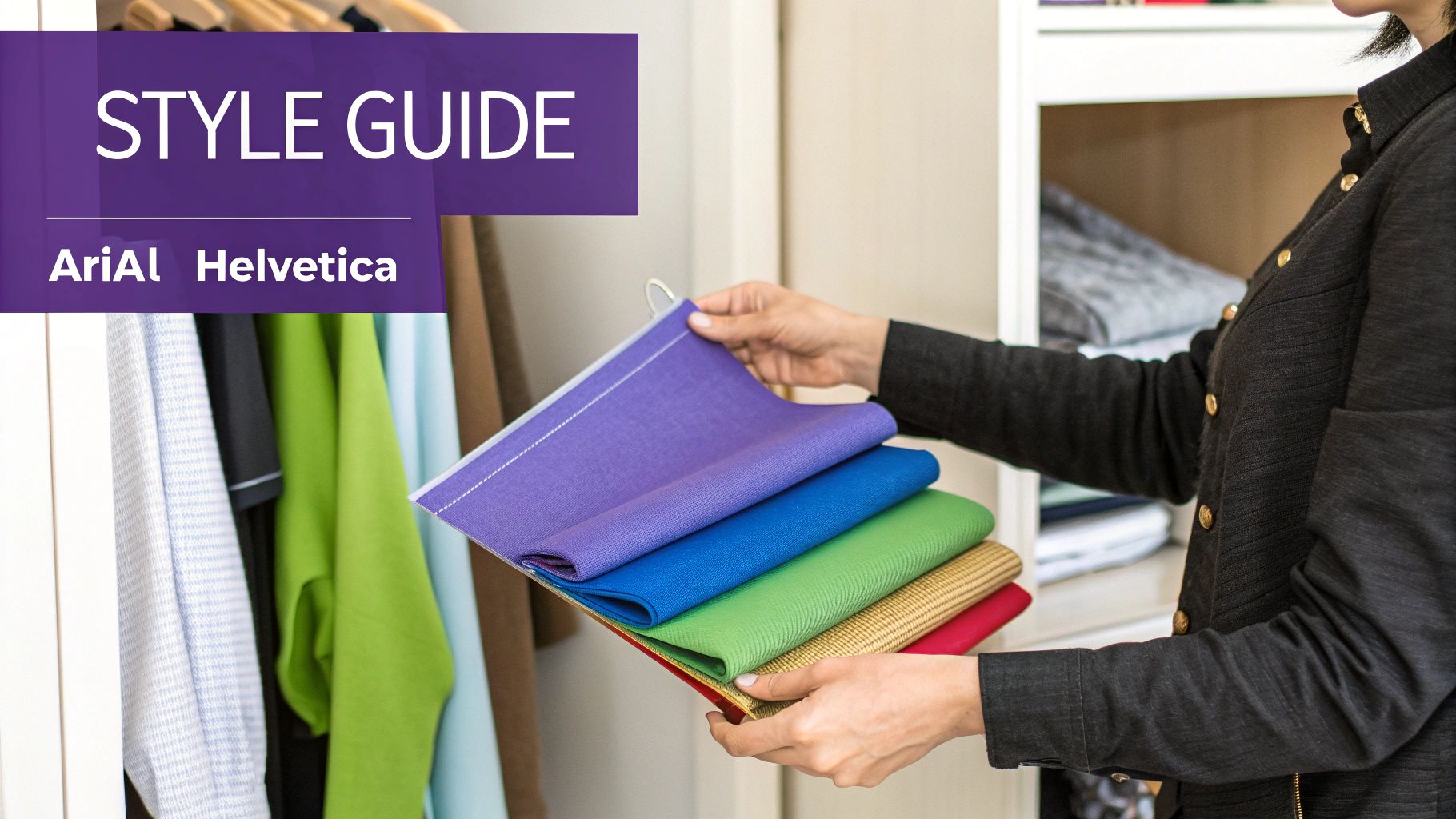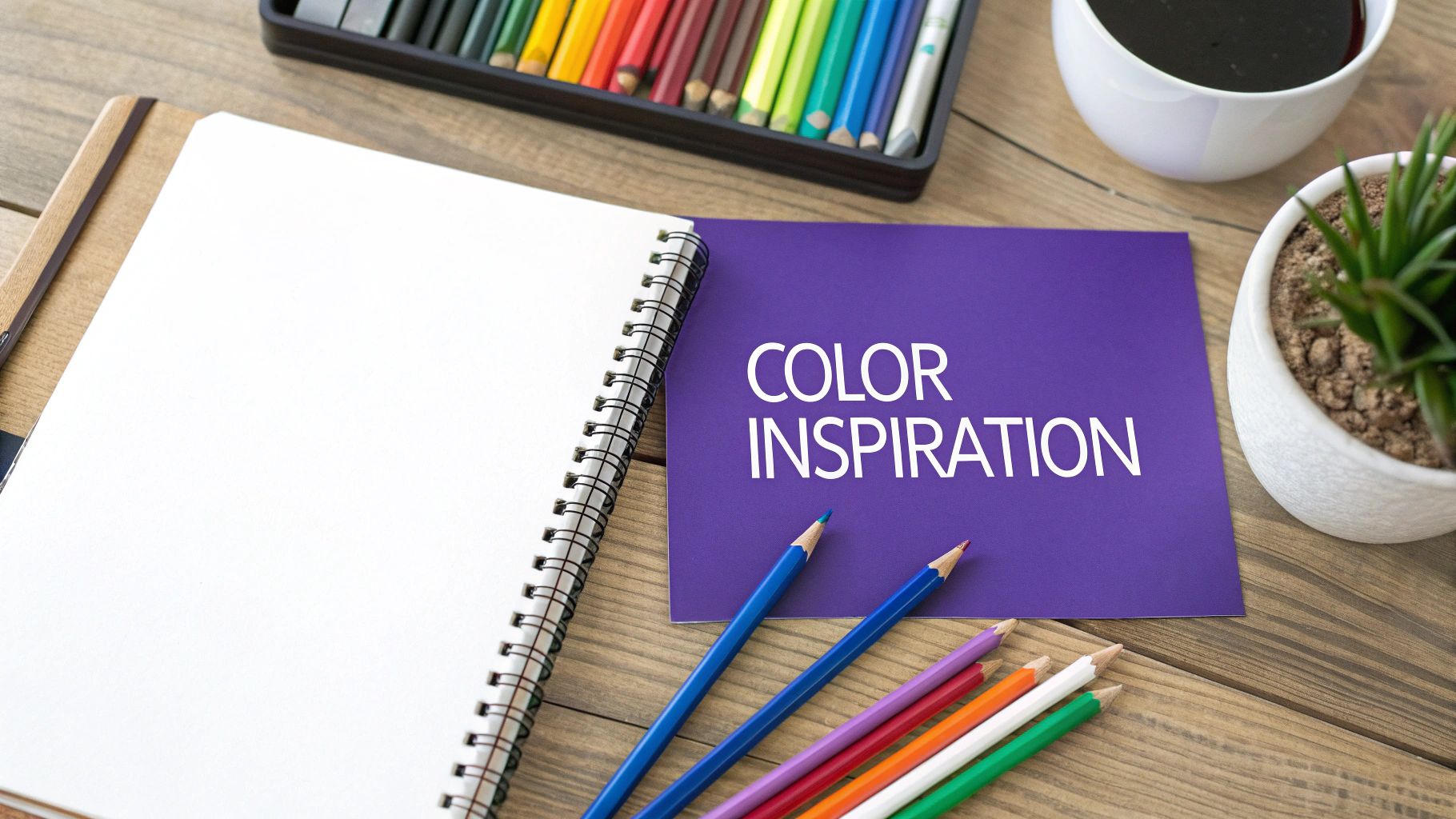
Color Analysis Quiz: Discover Your Perfect Color Palette With This In-Depth Guide
By Emma Johnson - 8/13/2025
Understanding Color Analysis: A Historical Perspective

While color analysis may seem like a recent trend, its origins stretch back much further than you might expect. The practice of determining flattering colors has deep roots in art, philosophy, and scientific research, evolving from basic observations to the detailed systems we use today.
Artists were among the first to notice how certain colors could enhance or diminish a subject's appearance in their paintings. This knowledge grew into formal theories about color harmony and visual perception. The concept of complementary colors - those opposite each other on the color wheel creating vibrant contrast - emerged from these early artistic studies.
Several key figures shaped the development of color theory. Johann Wolfgang von Goethe made significant contributions in the early 19th century with his philosophical approach to color perception. His work on how humans interact with color and how our perception changes under different conditions influenced later researchers like Michael Chevreul and Albert Munsell, who added scientific rigor to color theory. Learn more about the evolution of color analysis here.
The Rise of Scientific Color Systems
As color analysis matured, it began incorporating precise scientific principles. Researchers like Albert Munsell created systems to classify colors based on their hue, value, and chroma. This gave color analysts an objective way to discuss and evaluate colors, moving beyond personal opinions to establish reliable methods.
If you want to explore this topic further, check out this guide on How to master your perfect color palette. Research has identified key factors that influence which colors suit an individual best, including undertone, hair color, and eye color. These findings led to the creation of various color analysis systems, with the seasonal color system becoming particularly well-known.
By understanding this rich history, we can better appreciate why color analysis works the way it does. It's built on centuries of careful observation, thoughtful theory, and scientific testing. This background helps explain why modern color analysis quizzes can effectively help people find their most flattering colors.
The Four Seasons Color System Explained

The Four Seasons color system helps people find their most flattering colors based on their natural coloring. This practical approach sorts people into four groups - Spring, Summer, Autumn, and Winter - by analyzing their skin undertone, hair color, and eye color. When you know your season, selecting clothes, makeup and accessories becomes much simpler.
At the heart of this system is your undertone - the subtle color beneath your skin's surface. Undertones fall into two main categories: warm (golden/peachy) or cool (pink/blue). This key factor helps determine your season. For instance, warm undertones paired with golden blonde hair often indicates Spring coloring, while cool undertones with ash brown hair typically suggests Summer.
The seasonal color system gained widespread attention in the 1970s with Carole Jackson's book Color Me Beautiful. Her work made personal color analysis accessible to everyone by providing clear season-based recommendations. Read more about color analysis history here. This laid the foundation for today's color analysis tools and methods.
Defining Characteristics of Each Season
Each season has specific traits related to skin, hair and eyes:
Spring: Natural warm undertones, light golden hair, and bright eyes. Best colors include clear, warm shades like peach, coral, and golden brown.
Summer: Cool undertones, ash blonde or brown hair, and soft blue or grey eyes. Most flattering colors are muted and cool - think rose pink, lavender, and soft blue.
Autumn: Warm undertones combined with red or golden brown hair and warm brown or green eyes. Ideal colors are rich earth tones including olive green, burnt orange, and deep gold.
Winter: Cool undertones with dark hair and bright, contrasting eyes. Most striking in bold, cool colors like black, white, emerald green, and icy blue.
Read also: How the interplay of hair, eye and skin tone impact your color analysis. Keep in mind that individual variations exist within each season. A professional color analyst can identify subtle differences to give you more specific recommendations. Understanding how your coloring works together helps you find your most flattering palette. Taking a color analysis quiz is a good starting point for discovering your best colors.
Take The Ultimate Color Analysis Quiz

Want to find the colors that make you look amazing? Take this color analysis quiz to get started. Based on proven color theory principles, this assessment looks at your natural features - your skin undertone, hair color, and eye color - to determine your seasonal color type.
Why Take a Color Analysis Quiz?
Knowing your best colors can completely change how you shop and get dressed. Instead of guessing, you'll know exactly which shades complement your natural coloring. You'll have confidence picking out clothes, makeup, and accessories that enhance your features. The quiz helps explain why certain colors look fantastic on you while others might not work as well.
The quiz examines all the subtle details that make your coloring unique. It looks closely at your skin's undertone - whether you have cool pink/blue tones or warm peach/gold tones. This is key since undertone forms the basis of seasonal color analysis. The quiz also considers how your features work together, like the contrast between your hair and eyes, to give you personalized recommendations.
Tips for Accurate Quiz Results
Follow these guidelines to get the most precise color analysis:
- Natural Lighting: Do the quiz near a window with indirect sunlight. Regular light bulbs can change how colors look.
- Neutral Background: Use a white or off-white wall behind you to avoid color interference.
- No Makeup: Skip makeup so the quiz can assess your natural coloring.
- Clear Photos: If photos are needed, make sure they're well-lit and focused on your face.
Understanding Your Results
The quiz places you into one of the four seasons: Spring, Summer, Autumn, or Winter. Each season has specific colors that work best with your coloring. Many quizzes also identify sub-categories like Light Spring, Clear Spring, or Warm Spring for even more precise recommendations. These sub-seasons help fine-tune your perfect color palette. For example, if you're a Spring, you'll learn exactly which shades of Spring colors look best on you. Armed with your seasonal color profile, you can start building a wardrobe and makeup collection that makes you look radiant.
Interpreting Your Color Analysis Results

Taking a color analysis quiz is the first step in discovering which colors work best for you. Now it's time to understand how to use your results to make smart style choices that complement your natural coloring.
Decoding Your Seasonal Color Type
Your quiz results place you into one of four main color seasons: Spring, Summer, Autumn, or Winter. Each season represents colors that harmonize with your natural features. For example, Springs look radiant in warm, clear colors while Summers glow in cool, soft tones. Autumns shine in rich earth tones, and Winters stand out in cool, bold colors. Want to learn more? Check out how to master your personalized color report.
Within each season are distinct sub-categories that provide even more specific guidance. A True Summer and Deep Winter will have different ideal shades, even though both are cool seasons. These nuances help pinpoint your most flattering color choices.
Putting Your Color Palette into Practice
Think of your color season as a personalized shopping guide. When you choose clothes, makeup and accessories from your palette, they work together to highlight your best features. The difference between wearing colors that energize your complexion versus those that drain it can be striking.
Shopping becomes more focused when you know your best colors. You can quickly spot what will and won't work, saving time and preventing purchases you'll regret. No more trying on countless items only to feel that nothing looks quite right.
Beyond the Basics: Adapting Your Palette
While your color analysis provides clear direction, personal style is about making those guidelines work for you. Feel free to explore different combinations within your season's range to find what resonates most. Some people prefer a capsule wardrobe of core colors, while others enjoy incorporating many shades.
Learning to mix colors from your palette opens up creative outfit possibilities. Basic color theory concepts like complementary and analogous colors help you build interesting combinations. Just as painters blend colors thoughtfully, you can use your palette to create looks that feel authentic and polished. This gives you the tools to develop a wardrobe that's both flattering and a true reflection of your style.
Building Your Signature Color Wardrobe
Understanding your color analysis results provides the foundation for creating a wardrobe that makes you look amazing. This process goes beyond simply buying new clothes - it's about selecting pieces that enhance your natural coloring and work together seamlessly. Many style experts have seen firsthand how using color analysis principles can help create a signature look that consistently boosts confidence.
Transitioning Your Existing Wardrobe
There's no need to start from scratch. Begin by reviewing what you already own. You may be pleasantly surprised to find several pieces that align perfectly with your color palette. For example, if you're a Summer, you might discover soft blue sweaters or lavender blouses that already complement your coloring beautifully. These pieces become the core of your refreshed wardrobe.
Consider creative ways to work with items that aren't quite right. Adding accessories in your ideal colors, like a well-chosen scarf, can help bring an outfit into harmony with your color season. This approach lets you keep wearing pieces you love while ensuring they work with your natural coloring.
Smart Shopping Strategies
Your color analysis results make shopping much more focused and effective. You'll spot flattering colors quickly and avoid wasting time on shades that don't work for you. Picture walking into a store and immediately identifying which items will enhance your natural features.
Before purchasing, always check colors in natural light by holding items near your face. Notice if they brighten your complexion and make your eyes pop. If not, skip it. This simple test helps prevent buying mistakes, especially for key pieces like coats or blazers that you'll wear frequently.
Building Versatile Color Combinations
Creating outfit combinations within your color palette uses principles similar to art composition. Analogous colors - those next to each other on the color wheel - create peaceful, coordinated looks. A Spring might pair a coral blouse with a peach skirt for an elegant tone-on-tone effect.
For bolder statements, try complementary colors from opposite sides of the color wheel. A Winter could combine an icy blue dress with bright pink accessories for striking contrast. Mix your palette's neutral basics with accent colors to build outfits that express your style while flattering your natural coloring. This approach makes getting dressed both simple and fun.
Advanced Color Analysis Tips and Techniques
Understanding color analysis goes beyond just taking a basic quiz. By learning advanced techniques, you can understand and apply your ideal colors effectively across different situations.
Environmental Factors and Color Perception
How we see color changes based on lighting and surroundings. Natural daylight shows colors most accurately, while artificial lighting can alter how they appear - incandescent bulbs add warmth while fluorescent lights create a cool cast. An outfit that works indoors may look quite different outside.
The colors around us also affect how we perceive other shades. A vibrant red backdrop makes nearby colors appear more muted, while neutral surroundings let colors shine. Keep these environmental elements in mind when selecting outfits.
Mastering Contrast Analysis
The level of contrast between your hair, skin and eyes plays a key role in color analysis. Those with high contrast features (like dark hair with fair skin) can wear more dramatic color combinations. People with low contrast coloring (like light hair and skin) typically look best in softer, harmonious shades. Your contrast level helps determine which shades in your season are most flattering. For example, Deep Winter types shine in stark black and white, while Soft Summer types glow in muted pastels.
Cross-Seasonal Color Combining
While staying within your season is a good foundation, thoughtfully mixing colors from adjacent seasons can add interest to your wardrobe. Focus on matching undertones and color properties. A True Summer may successfully incorporate certain Soft Autumn shades with similar cool undertones. Experimenting with neighboring seasons often yields surprisingly good results.
The Psychology of Color
Colors trigger emotional responses and shape how others perceive us. Blue tends to convey trustworthiness and calm, while red suggests energy and passion. You can use color psychology strategically - a Warm Autumn might choose terracotta to appear grounded and approachable, while a Bright Spring could opt for sunny yellow to project optimism.
Ready to discover your perfect colors and unlock the power of personalized style? Take our AI-powered color analysis quiz at AI Color Analysis and receive your detailed, custom report instantly.
Article created using Outrank
Take your style to the next level with a professional analysis
You already know the theory. Now discover exactly which colors and styles enhance your personal image.
Loading...
Complete PDF report in less than 5 minutes
Your color season and personalized palette
Specific makeup and clothing recommendations
Based on professional color analysis
One-time investment:
One-time payment, no subscriptions. Instant access.